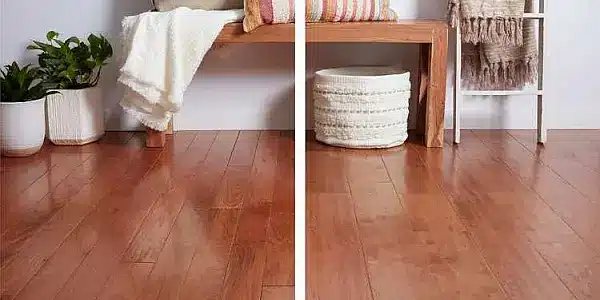When it comes to choosing flooring for your home, hardwood is a timeless and elegant option that adds warmth and beauty to any space. However, the decision between engineered hardwood and solid hardwood can be tough. Both have their advantages and considerations.
This article will discuss engineered hardwood vs hardwood flooring to help you make an informed decision that suits your needs and preferences.
Understanding Engineered Hardwood
Engineered hardwood is a flooring option crafted from a thin layer of real hardwood, known as the wear layer, bonded to multiple layers of high-quality plywood or fiberboard. This construction gives engineered hardwood exceptional stability and resistance to moisture, making it suitable for installation in areas prone to humidity and temperature fluctuations, such as basements or kitchens.
Exploring Solid Hardwood
Solid hardwood, on the other hand, is made entirely from solid wood, typically cut from a single piece of timber. This traditional flooring option boasts authenticity and natural beauty that comes from the unique characteristics of each plank. Solid hardwood is renowned for its durability, longevity, and ability to be sanded and refinished multiple times, allowing you to revive its appearance as needed.
Factors to Consider
Durability and Maintenance: Regarding durability, solid hardwood takes the lead. Its thick construction can withstand heavy foot traffic and last for generations with proper care. Though not as thick as solid hardwood, engineered hardwood offers durability and longevity. However, the wear layer thickness plays a crucial role in determining its durability and lifespan. Thicker wear layers can be refinished multiple times, adding to the flooring’s longevity.
In terms of maintenance, both options require regular care to maintain their beauty. Both engineered and solid hardwood should be kept clean from dust and debris, and spills should be promptly wiped up. However, engineered hardwood’s resistance to moisture makes it less prone to warping and shrinking, making it a more forgiving choice for households with children or pets.
Appearance and Aesthetics: When it comes to aesthetics, the choice between engineered and solid hardwood largely depends on personal preference and the desired look. Solid hardwood showcases the authentic beauty of natural wood with its unique grain patterns, knots, and color variations. It exudes a timeless charm and can increase the value of your home. Engineered hardwood offers a similar appearance with its top layer of real wood, but the selection may be slightly limited compared to solid hardwood.
Environmental Considerations: If you are environmentally conscious, engineered and solid hardwood options have advantages. Solid hardwood is a natural and renewable resource that requires cutting down trees. However, many reputable hardwood manufacturers prioritize sustainable harvesting practices and certifications. Engineered hardwood, on the other hand, often utilizes faster-growing wood species for its core layers, reducing the impact on natural forests.
Conclusion
Choosing engineered hardwood vs. hardwood depends on your needs, budget, and preferences. Solid hardwood offers exceptional longevity and can be sanded and refinished multiple times if you prioritize durability. However, engineered hardwood can be suitable if you require more versatility in moisture resistance and installation areas.
Consider factors such as your lifestyle, location, desired aesthetics, and environmental impact when making your decision. It’s also beneficial to consult with flooring professionals who can provide expert advice tailored to your unique circumstances. By carefully weighing the pros and cons of each option, you can select the flooring that best enhances the beauty, comfort, and value of your home for years to come.
